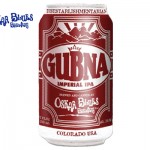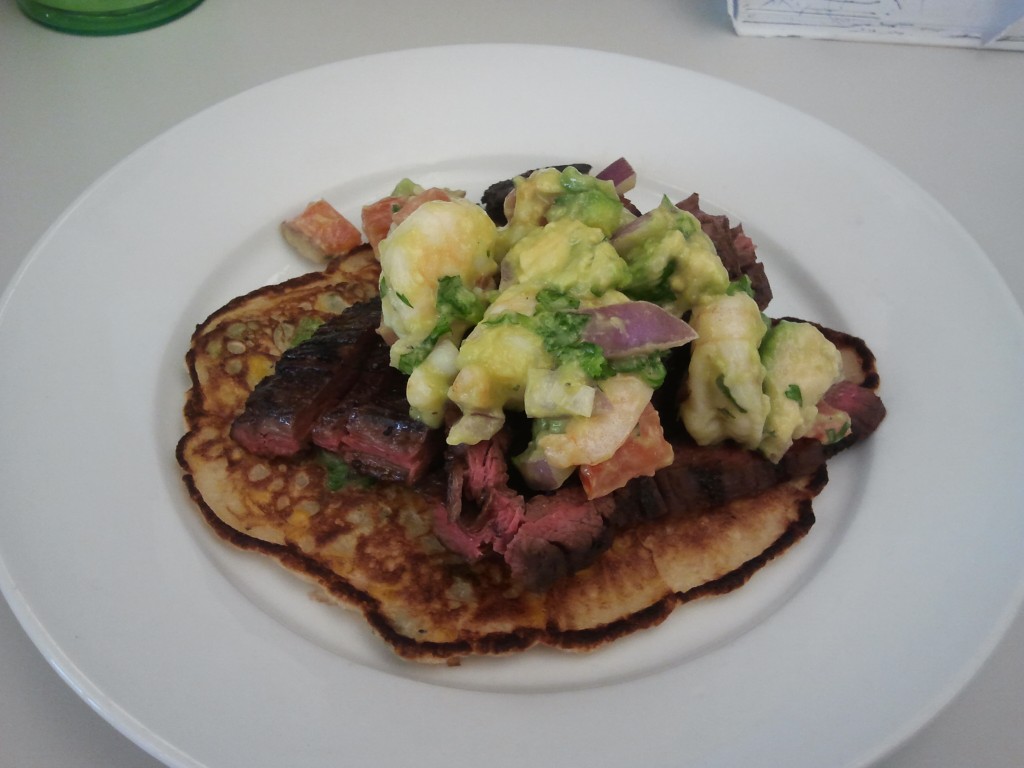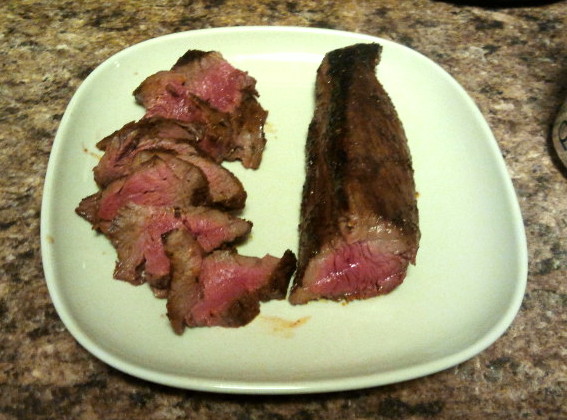Archive for June, 2012
A good while back, I saw a link on a friends gchat status for www.skillshare.com.  It’s a great site that has a ton of local classes on everything from entrepreneurship to art to cooking.  After putting up gmail filters so Groupon, Living Social, and their brethren no longer dominate my in box, I started noticing the Skill Share emails again and decided it was time to sign-up for a cooking class.
I picked the dumpling making class in part because it fit well in my weekly schedule and in part because I’ve never made dumplings.The instructor Cathy Erway, a food blogger and author of The Art of Eating In (a chronicle of her two years of not dining out in NYC), taught the class from her Brooklyn apartment.  She was a great instructor and the class was a great break from the usual week night activities.
How to Make Dumpling Skin
Cathy first showed the eight or so of us how to make the the wrapper dough from scratch: Start with two cups of stifted flour and one cup of warm water and about a 3/4 teaspoon of salt.  Put it all together in a big bowl and  mix with a wooden spoon or your hands until you get a ball.  Transfer to lightly floured surface and knead until smooth and shiny.  Knead the ball.  Break off pieces and roll them out into about four inch diameter circles, nice and thin.  (Making them as thin as possible to handle is an art that makes magic dumplings.)
How to Buy Dumpling Skin
Though, as Cathy told us, unless you’re making only a handful of dumplings, you might go insane making them from scratch. Â Making the wrappers seems to be a simple, Â but time consuming process that can be replaced with store bough dumpling wrapper with minimal harm. Â When you buy the wrappers, be sure to get the white, round dumpling wrappers. Â The yellow ones are usually wonton wrapers and square shapes will just be trouble when you get to the filling stage.
How to Make the Stuff that Goes in Dumplings
The biggest lesson from this class was don’t be afraid to go a little crazy with your fillings.  You can keep it simple and traditional or create concoctions that will have deceased Chinese grandmothers spinning in their graves.
[DDET Classic Pork, Shrimp & Chive Dumpling Filling]
Makes 38.
- 1 lb ground pork
- ¼ lb shrimp, shelled, de-veined and finely chopped (optional)
- 1 bunch chives or scallions, chopped
- 1 cup finely shredded napa cabbage, packed
- 1 ½ tablespoons corn starch
- 1 tablespoon soy sauce
1 teaspoon sesame oil
- 1 tablespoon freshly grated ginger
- ¼ teaspoon white pepper
[/DDET]
[DDET Asparagus, Mint and Feta Dumplings with Balsamic Vinegar]
- 15 round dumpling wrappers
- 1 bunch asparagus, tough ends trimmed, finely chopped
- 1-2 tablespoons chopped mint
- ½ cup crumbled feta cheese
- pinch of salt
- black pepper to taste
Combine all ingredients. Swap in other raw seasonal veggies such as zucchini or summer squash shredded with a box grater.
[/DDET]
[DDET Cheeseburger/White Castle Dumplings ]
- 1 lb ground beef
- 1 teaspoon salt
- 1/2 teaspoon black pepper
- 2-3 teaspoons Worcestershire sauce
- 2 teaspoons mustard
- 1/4 cup finely chopped onion
- 3 oz. grated sharp cheddar (or any cheese you prefer)
Mix everything but the cheese together, then fold the cheese in.
[/DDET]
We made the above in class and all were really tasty. Â My favorite was the classic. Though the cheeseburger dumplings were really fun and made me want to experiment.
How to Fold Dumplings
So you have your dumpling skin and a great filling how do make a dumpling?  Lay the dumpling skin in your hand and put a spoonful of your filing in the middle.  If you’re using the purchased skins, you’ll need to dip your finger in water and trace a wet ring on the outside of the skin–this what will make it stick together in the next steps.   Fold the wrapper in half and pinch (so the two sides stick together) at the top.  Then pull a piece of the edge about half an inch to the right of the pinch over to the pinch, repeat down the side of the dumpling and do the same for the other side.  It’s a little hard to visualize, but the result should look like crescent moon.  Place the dumpling seal side-up while you make some more.
How to Cook the Dumplings
Cathy explained that the cooking process is really a combo of steaming/boiling and frying the dumplings. Â The frying is what gives dumplings that crispiness we all know and love from our favorite takeout. Â The steam is what gets the dumplings cooked through and through.
Heat oil in a large pan. Â Once the oil is hot, place the dumplings, unsealed side down, into the pan. Â Cooking unsealed side down, rather than on their side, will help get the awesome crisp you want. Â Cook the little guys in the oil for two minutes or so. Â Add enough water to the pan to cover about one quarter of the height of the dumplings, reduce heat to medium, and cover for four minutes. (It’s time to give ’em a steam bath!) When the water is gone, crackling sounds are a clue, the dumplings should be ready to scrape out onto a plate.
Serve with some soy sauce, maybe mixed with a bit of rice vinegar, and enjoy!
So, I figured out why all of my phone pictures were turning out so, so incredibly terrible. Some genius at Samsung made the default picture size 640×480. So, even though my phone has a 5 megapixel camera, it was taking .3 megapixel pictures. Awesome.
Well, now that I figured that out, I can take MUCH better pictures when I don’t neccesarily have my digital camera with me. Like maybe when there is a special chef’s exhibition table in the cafe at work. Case in point:
THAT, my friends, is a grilled skirt steak, rubbed with Ancho chili and cocoa powder, on top of a sweetcorn griddle cake, topped with a shrimp-avacado salsa. It was amazing, and it was $6. I love where I work.
That is also clearly a much, much better picture than the one of the venison tenderloin you can see in the post below. And if you click on the picture to see the full version, you can really tell the difference. Its like I’m living in the future or something!
No recipe with this one today, just a picture and an exhortation: Go kill yourself a deer. Or, if you find all of your fall weekends occupied with debate tournaments – quit laughing, I’m giving back to the community – find yourself some family and friends with a surplus of this tasty critter in their freezer. This particular chunk of bambi came from my cousin Suzi and her wonderful, generous husband Ben. Now, if you take this latter option you will occasionally have to improvise your meal based on what cut of meat you get. If all you know how to do is make venison steaks you might be SOL when you end up with sausages or a roast. Luckily, all venison tastes amazing as long as you don’t overcook it.
This time I lucked out and got a package of venison tenderloin. Tenderloin! Maybe the best cut of meat on the whole animal! Quick side note – This is an uncomfortable fact that most hunters don’t share with people who eat venison but don’t want to hear about where it came from: the younger the deer, the better the meat. You can definitely tell the difference between a young buck with his first pair of velvet antlers and an old grizzled bastard that’s been dodging bullets since the last days of the Clinton presidency. Not saying you should only aim for fawns with spots, but it is a fact nonetheless. Back to the meat – if you should be lucky enough to get some tenderloin, keep it simple. This was rubbed with some sea salt, olive oil, fresh cracked black pepper, and chili powder. Cooked over some roaring hardwood charcoal, it develops a fantastic crust on the outside while staying tender and juicy in the middle.
 Before this week, I had a wine guy and a whiskey guy. Â But I was missing a beer guy. Â A man who not only knows his stuff, but has the stock to back it up. No more. Â Today, on my walk home from the train, with a little guidance from my beer guy, I picked-up a new (to me) IPA.
Before this week, I had a wine guy and a whiskey guy. Â But I was missing a beer guy. Â A man who not only knows his stuff, but has the stock to back it up. No more. Â Today, on my walk home from the train, with a little guidance from my beer guy, I picked-up a new (to me) IPA.
10% ABV and 100 IBU.  Like Dale’s Ale, with also comes to us from Oskar Blue Brewery in Colorado, this bad boy comes in a can.
—
Appearance: Â A golden orange.
Smell: Â Very light in this department. Hops and a little someth’n sweet.
Taste: Â Hoppy. Â Very little sweet. Â The hops are strong, though not over the top, but the lack of sweetness emphasizes them. Â A long and strong bitter finish which makes you want to keep sipping.
Mouth:  Good carbonation that foams nicely in the mouth.  Easy to drink.
Overall:  A solid IPA which at first reminded of Harpoon IPA, one of my go-to beers.  I would love for Toby’s Public House to have this around. Unless you’re on a mission to try new IPAs, it’s not worth going out of your way to find; you can find equally good beers without the effort.  But if you see it, drink it.
A few weeks back, my friend Erin sent out an email with the brilliant idea of a supper club.  In a twist on the classic supper club, the guests are in charge of the food while the host takes on the booze.  Each dinner is to be organized around a theme and this last Saturday things kicked-off with Peruvian night.
Ceviche
On reading the theme, I was taken back in time to a cliff top restaurant in Lima where I savored ceviche while watching the large dark blue waves of the Pacific ocean roll, crash, and foam below.  I knew I had to make this citrused Peruvian classic.
In fairness, this dish likely originated in a few place across the globe.  But around 500 years ago the Moche, a coastal civilization in current-day northern Peru, came up with the stuff.  Modern Peru adopted it and it hit the United States in force in 80s. It’s easy to make and prefect for these warm summer months.
For the uninitiated, cechive is fish or seafood “cooked” in citrus.  Cooking fish, meat, poultry, etc. is all about changing the structure of the proteins or breaking them.  In science/Alton Brown talk, the citrus does its cooking by denaturing the proteins in the fish.  And, since the cooking comes from the fish’s time in the citrus bath, unless you’re using sushi grade fish, be sure to use small pieces and marinate for approximately three hours; raw fish can carry some nasty stuff.
[DDET The Ceviche Recipe]
Ingredients
- 1 pound white saltwater fish: albacore, sole, snapper, halibut, etc. Â (I used halibut)
- 1 cup lime juice
- 1/2 cup lemon juice
- 1/2 cup orange juice
- 1 T. salt
- 1 rocoto chile (chile manzano in Mexican markets) or 2 aji limon (substitute a habanero) – I used the habanero, the only pepper I could find.
- 1 medium onion, sliced very thinly into half-moons
- 4 T. chopped cilantro
Directions
For the citrus, you’re going to want to buy the fruits and juice them yourself.  The stuff you buy in a bottle is going to disappoint every time.
Cut the fish into pieces no bigger than one inch cubes; remember the bigger the pieces the longer it takes for the citrus to do its work. Salt the fish, then cover with the citrus juice in a non-reactive (glass or plastic, metal might yield an unpleasing metallic taste). Add the sliced onions and the chiles.  Put the covered mixture in the fridge for two to three hours–if you have true sushi grade fish, its okay to shorten so the fish is still raw in the middle.  When you serve, garnish with the cilantro.
[/DDET]
Overall, ceviche is a very forgiving dish as long as you start with good fish. Â It’s a great food to play with: ratchet up the heat (the habeneros were a little intense), pull it back, add the cilantro before marination, change-up the citrus juice, etc.
Peruvian Stewed Chicken
Because ceviche is, in all honestly, a bit of a cooking cop out, I helped Nick and Becca in their preparation of Peruvian Stewed Chicken.
[DDET The Peru Peruvian Stewed Chicken Recipe]
Ingredients
- 1 (16 ounce) can chopped tomatoes
- 1 tablespoon olive oil
- 1 medium onion, finely chopped
- 3 cloves garlic, minced
- 1 teaspoon cumin
- 1 teaspoon dried oregano
- 1 bay leaf
- 10 to 12 small chicken pieces
- 1 teaspoon coarse salt
- 1/2 teaspoon freshly ground black pepper
- 1 green bell pepper, sliced
- 1 cup green peas
Place tomatoes in a blender or a food processor fitted with the metal blade and process until liquefied. Set aside.
Heat oil in a large saucepan or stockpot over moderate heat. Add onion and saute until soft, about 10 minutes. Add garlic and saute for another two minutes. Add cumin, oregano and bay leaf and stir to combine. Sprinkle chicken pieces with salt and pepper and add to pan. Brown the chicken lightly. Add the tomatoes and enough water to cover 3/4 of chicken. Bring to a boil, cover, reduce the heat, and simmer for 45 minutes to an hour, until chicken is cooked through. About 10 minutes before the chicken is done, add the green pepper and peas. Serve warm.
[/DDET]
True to form, we managed to pull off the dish and (a big pot) of rice and arrive fashionably late, along with most of the supper club crew. Â At the dinner itself, the stewed chicken was a bit bland. Â Though the the next day, the flavors had come together and were more bold. Â I would recommend making this dish a day in advance and reheating, for maximum flavor.
Transporting our creations was a bit tricky and I was thrilled, for probably the 100th time, that Becca actually has a car in New York.
The Supper
The actual meal was a lot of fun.  Erin pulled together a good group of people who pulled off some great dishes (including a salad, a cheesy potato dish, and a beef dish that seemed to be the bovine cousin of the stewed chicken) .  I’m very much looking forward to the next one.
 Like a lot of Dogfish Head brews this guy comes with a bit of a back story. Â The brewery itself describes it as follows:
Like a lot of Dogfish Head brews this guy comes with a bit of a back story. Â The brewery itself describes it as follows:
An unfiltered, unfettered, unprecedented brown ale aged in handmade wooden brewing vessels. The caramel and vanilla complexity unique to this beer comes from the exotic Paraguayan Palo Santo wood from which these tanks were crafted. Palo Santo means “holy tree,” and its wood has been used in South American wine-making communities.
At 10,000 gallons, our Palo tank is the largest wooden brewing vessel built in America since before Prohibition (and we have two same-sized oak tanks right next to it).
Oh, and it clocks in at 12% ABV.
Appearance – If you could blend iced coffee and motor oil.  Dark.  Thin dark brown foam.
Smell – Malty, nutty, and earthy. Â Some cherry on my first few sniffs.
Taste – BANG!  If you weren’t awake every taste bud you have just slapped you in the face.  Malt, cedar, roasted nuts.  Some bitterness.  A finish that hits a little caramel or crème brûlée.
Mouth – Dry. Â Very dry with some heat from the alcohol. Â Yet the beer remains dangerously drinkable.
Overall – Pretty freak’n awesome. Â Not what I’m going to be reaching for a lot this summer, though. Â I would be excited to try to pair this with some savory meat, maybe even with a little heat in the mix.
This beer is inches from the edge of cliff that plummets into an overly alcoholic, difficult to drink concoction.  I don’t like beers over that cliff, but love this one.  Another job well done Dogfish Head.



